People of the Stones: coastal communities and stone tidal fish weirs
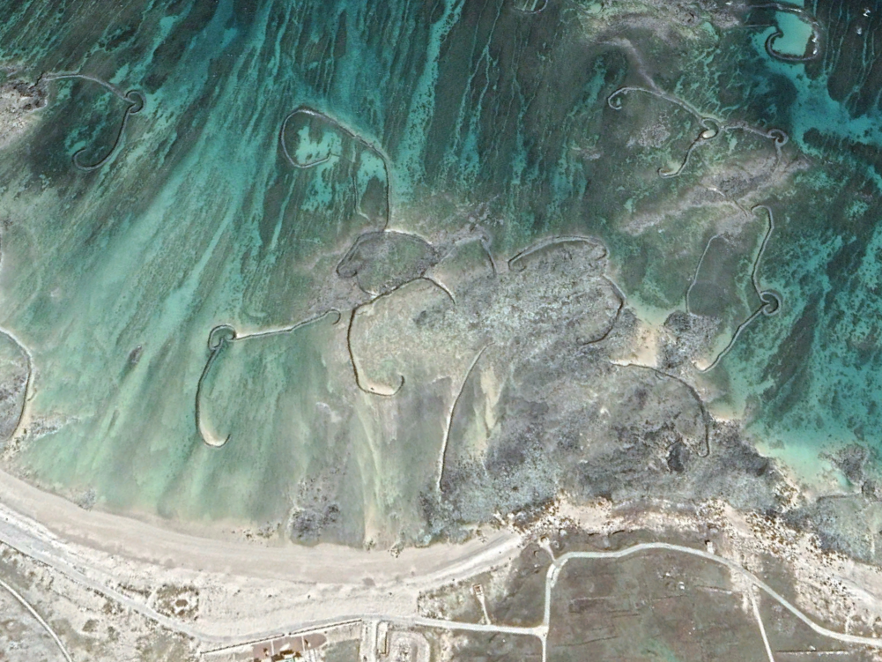
By Paul Montgomery
Taiwan is home to one the largest concentrations of stone tidal fish weirs, and home to some of the most well-preserved examples of this architectural form. In particular, the area around Penghu Archipelago in the Strait of Taiwan is home to over 500 stone tidal fish Weirs. In June 2023 representatives of the UNESCO endorsed Oceans Decade project “Indigenous People, Traditional Ecological Knowledge, and Climate Change: The Iconic Underwater Cultural Heritage of Stone Tidal Weirs” (which includes Research Fellow Dr. Paul Montgomery of Trinity College Dublin) visited Taiwan, conducting field visits and taking part in a number of knowledge exchange activities. Taiwan's stone tidal fish weirs, which are known as “shi hu”(石滬) in Chinese (Chen 1960; Chen 1976; Zayas 2004, 2011), were introduced from mainland China sometime in the Qing dynasty (1644–1912) (Jeffery 2013: 53). In addition to having some of the largest articulated stone tidal fish weirs in the world, they also have a large number of community associations who represent coastal communities who use these structures.
As archaeologists and anthropologists, we find ourselves being frequently pigeonholed into the caricature of the scientists who are obsessed with stones, rocks and dirt at the expense of nature and sometimes even humans. Ernest Hooton (1938: 218) once described archaeologists as “the senile playboys of science rooting in the rubbish heaps of antiquity.” Despite this lopsided interpretation of the activities of archaeology, it does have a certain grain of truth in that many of the traditional fields of archaeology are very focused on the processes such as archaeological site formation or the architecture of a particular building, rather than the people who actually made it! Unlike the glamorised stereotype of big screen archaeologist Dr. Henry Jones Junior, much of the work of modern archaeologists is done on a micro scale. We combine a range of methods and sources of information to understand the processes and materials involved in an archaeological site and extrapolate what such data can tell us about the society responsible for their appearance in the archaeological record.
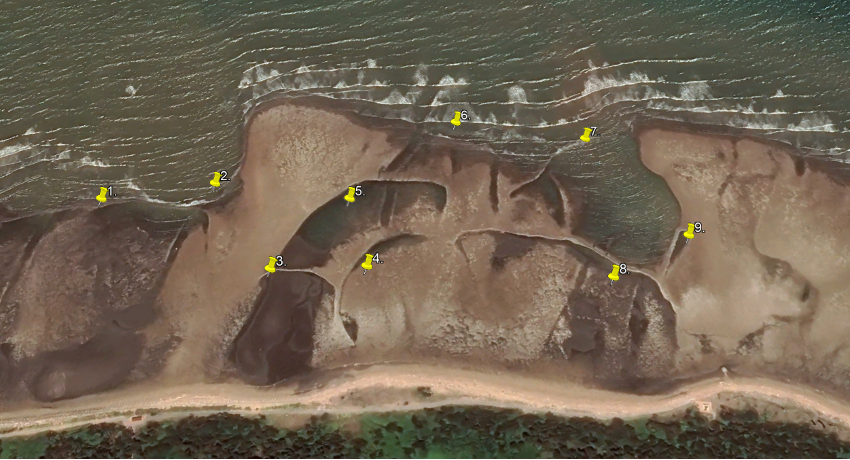
Figure 2. Aerial image of the structure of the stone tidal fish weirs at Xinwu Kejian Stone weirs Taoyuan City, Taiwan. (Source: Google Maps, accessed on [07/08/2023]. Picture by Dr. P. Montgomery.
Taiwan's coastal communities have been working with and shaping these structures to fit not only their economic requirements but also adapting to the aquatic ecology, bathymetry, and characteristics of the coastline. Currently many of the weirs that are still functioning are owned by local extended families who have been utilising these fisheries for generations. Their maintenance and upkeep require a large amount of manpower which are organised by community-based groups. Their construction at least for the last 100 years has been conducted by skilled individuals, “master stoneworkers”, who specialised in learning the techniques and methods of constructing these structures over decades of learning as apprentice. In its modern iteration these skills and knowledge are fading as the number of weirs being used has reduced overtime, due to the decline economically off their viability in the face of commercial ocean-going fishing. In the past, the construction of these weirs almost certainly would have involved large numbers of people from the local community who provided the labour force to assemble and move stones around the site under the supervision of more skilled and experienced fish weir builders. Their construction is emblematic of the strong relationship and “community spirit” that is a characteristic of such communities. This strong relationship is embodied by the community centre/Museum at Xinwu Stone Tidal Weir Story House (新屋石滬故事館), a community-based initiative actively working in the conservation and preservation of the cultural history of the region and its fisheries. As part of this outreach project, they also have regular classes open to the public in which individuals can be instructed in the building and functioning of the traps, as well as the ecological issues of the local environment like pollution and overfishing in which the traps are located.
Figure 3. Left picture the profile of wall of Xinwu Kejian (新屋蚵间) weirs, right a close up of the surface of the weir showing the thick layer of crustaceans i.e. Barnacles (balanus glandula) holding it together. Picture by Dr. P. Montgomery on [13/06/2023]. 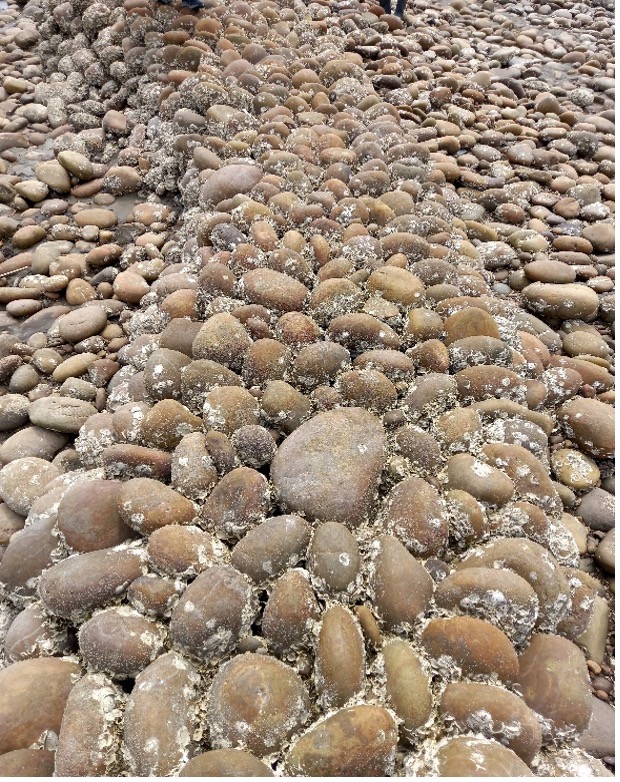
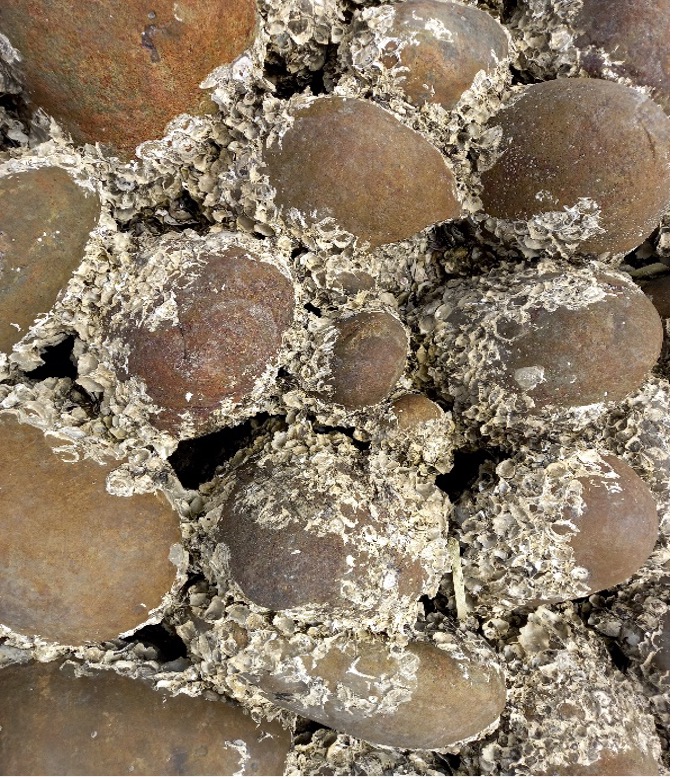
During our time in Taiwan, we visited two groupings which represented the most common form of tidal fish weir semi-circular shapes. The first were found on the mainland at Xinwu Kejian Stone weirs in Taoyuan City, Taiwan, and the second were the stylised chevron found on the Penghu peninsula, around many islets such as Jibei island. The Xinwu Kejian Stone weirs (新屋蚵间石滬群) are located on the northwestern mainland of Taiwan. They constitute a complex of nine interlinked stone weirs (figure 2). Morphologically the Xinwu Kejian weirs are semi-circular shape structures that are positioned in intertidal areas and designed in a way to allow the fish to enter them when the tide is flooding and for the fish to be trapped when the tide falls. The Xinwu Kejian weirs walls are constructed of local rolled cobles, built 2 to 4 meters wide and between 300 and 500 meters long. Structurally the walls of the trap are built by creating a layer of large cobbles which are infilled with smaller stones and material creating layers of stable stones on top of each other (figure 3). This building though seemingly a very simple is a skill is honed by years of practise, passed down from generations of fish weir builders in the community.
In the case of the stone weirs found commonly around the Penghu Peninsula, morphologically they are normally in a chevron shape with curved elongated leader arms curved at the end in a wide V shape running towards a stone semi-circular “heart” chamber at the pinnacle of the V (figure 1 & 4). Iconic in their form but not very well known throughout the world they appear online as a symbol of love around Valentine's Day, known as the “double heart” Shi Hu or stone tidal fish weirs in Qimei Township (七美鄉), Penghu County (澎湖县), Taiwan (figure 6). They come in a range of sizes ranging from 100 metres long to over a kilometre in length, sometimes interlinking across large areas of the intertidal zone.
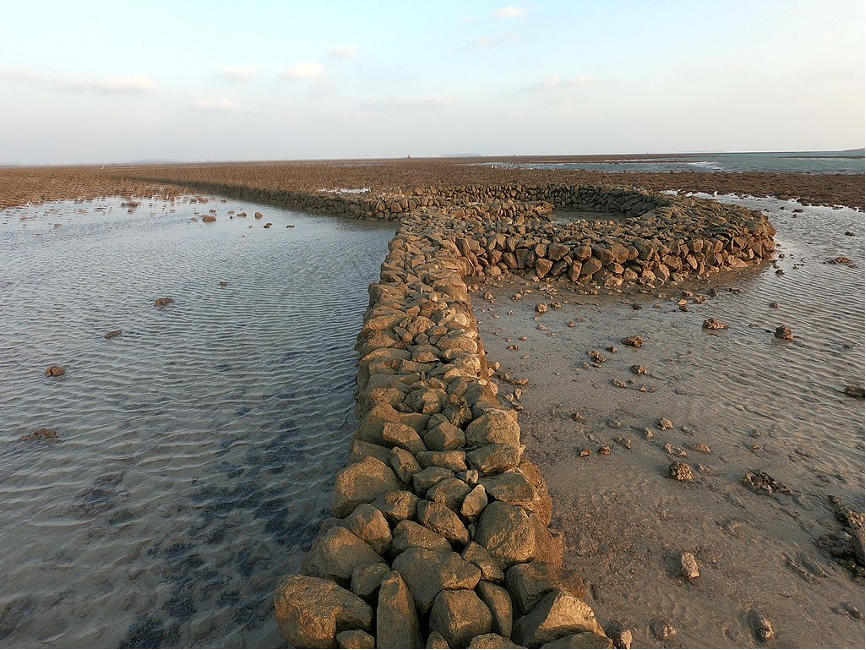
Figure 4. Stone weir wall in Penghu. Photo by Cynthia Neri Zayas on [01/120 2019].
While simultaneously being a man-made structure, the construction of these weirs also allows sea life fish, coral/ seaweeds crustacean species inhabiting the surface of the stones forming an artificial reef. In the case of these particular weirs as the tide recedes, they also form large intertidal pools enclosed by the walls on which fish are confined and accessible to the fishermen. The walls of the weirs are held in place by the weight of the stone, but also by a layer of organic growth composed of seaweed, barnacles and other marine species which adhere to the rocks and form a crust helping to hold the fish in place, creating a kind of anthropogenically constructed reef. A wide number of fish species, Japanese meagre (Argyrosomus japonica), Gray Mullet (Mugil cephalus), and other pelagic fish species like Tuna and Bonito, can be found in the traps, depending on currents and the seasons. Speaking with the fishing community reveals that, in addition to catching fish, they also gather shellfish and sometimes octopi which can inhabit the weir. Although not as economically successful as they once were in the past, local communities have started to realise that their value is not only seen in the number of fish they catch but in the health of their coastline and its value in attracting tourists to the area.
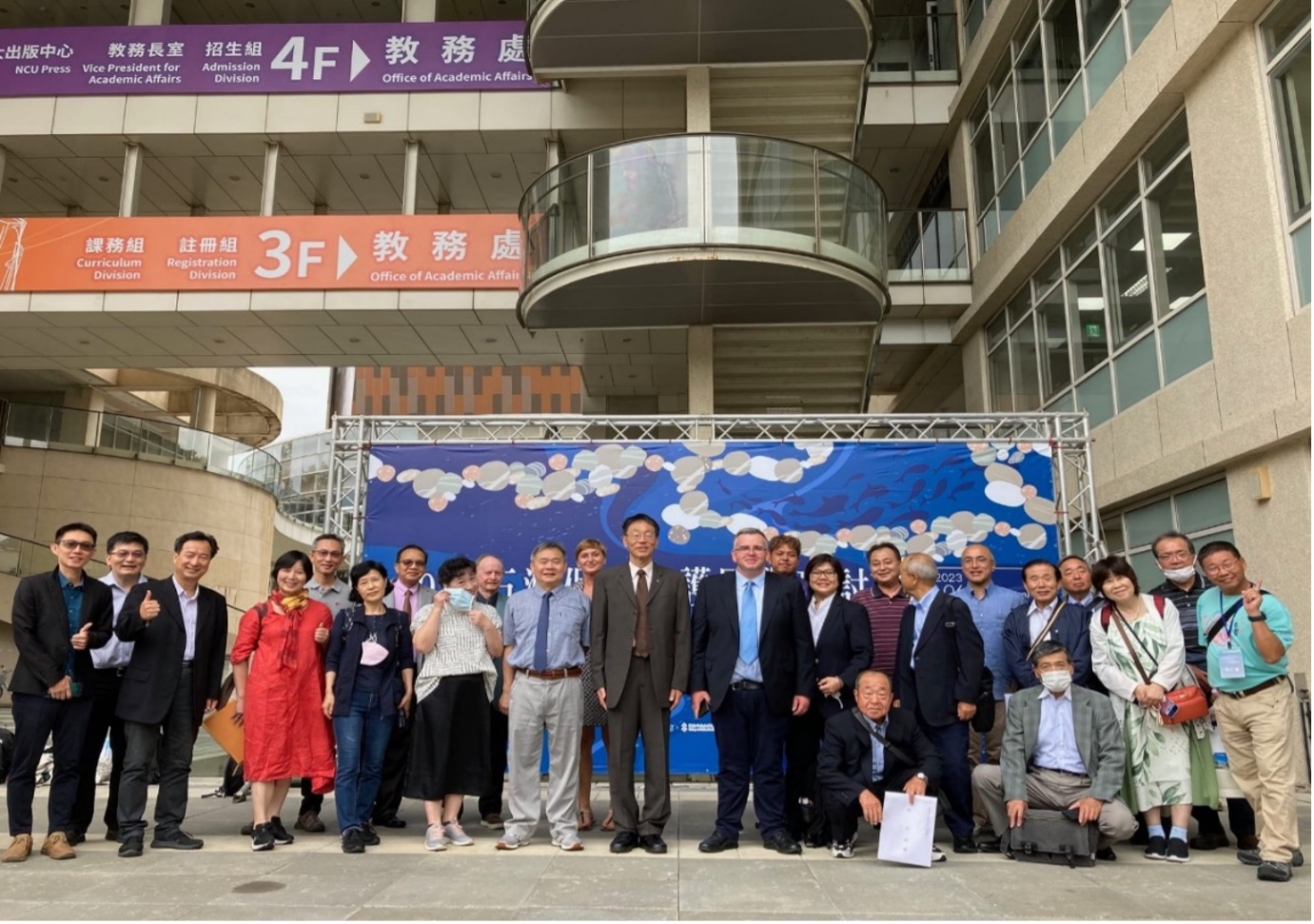
Figure 5. Group photos of the 2023 International Conference of the Conservation and Stone Tidal Weirs Taiwan. With a wide group of scholars and NGO working on the topics of stone tidal fish weirs in Taiwan, Japan, USA, Poland, Ireland, and the wider Asia pasific. Photo by Miss Amber Ho date [12/06/2023].
Academic and community outreach
In addition to the fieldwork during our research, we also had the opportunity to take part in 2023 International Conference of the Conservation and Stone Tidal Weirs being held in Taipei, Taiwan (figure 5). The conference was hosted by the National Central University of Taiwan in collaboration with the BOCH (cultural heritage division of the government of Taiwan). The meeting was part of wider movement to bring scholars and professionals together (from Japan, the Philippines, United States, Ireland, Poland, South Korea) to promote the study of stone tidal fish weirs in Taiwan as well as around the world. The meeting also issued a joint statement titled “A Consensus on the Conservation and Maintenance of International Cultural Heritage of Stone Tidal Weirs” (《國際石滬文化遺產保存維護共識》). This document conveys the core issues and debates held during the three-day conference and symbolises the need to act in the promotion and conservation of this form of human cultural heritage needed on a global stage.
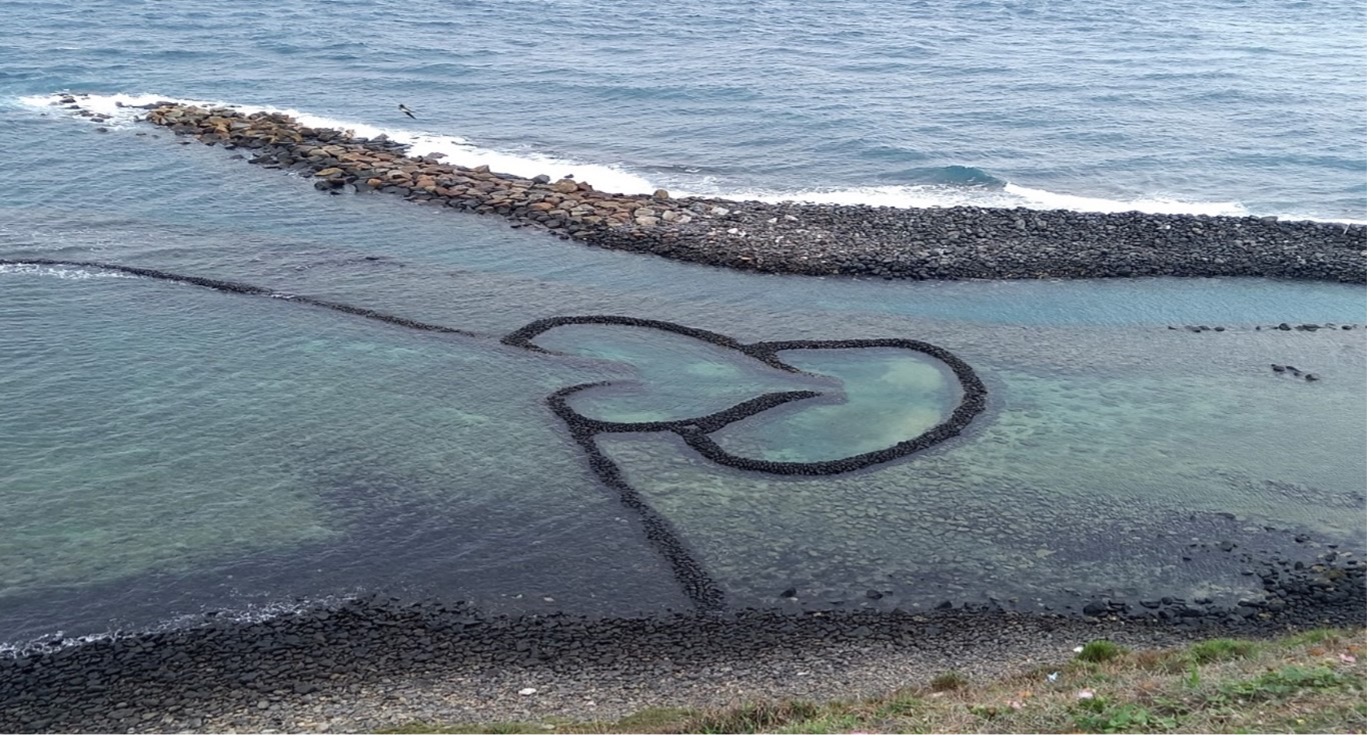
Figure 6. “Double heart” Shi Hu or stone tidal fish weirs in Qimei Township (七美鄉), Penghu County, Taiwan. Photo by Dr. Paul Montgomery [11/06/2023].
Bibliography

